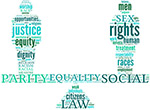 There are some issues that dental nurses and other dental care professionals may need to be aware of in the workplace. It is important for individuals to know the facts concerning employment laws, for their own protection and security. Age discrimination may be one of them.
There are some issues that dental nurses and other dental care professionals may need to be aware of in the workplace. It is important for individuals to know the facts concerning employment laws, for their own protection and security. Age discrimination may be one of them.
Dental nurses should know that employers are advised to implement an ‘equal opportunities’ policy. This should then be presented to employees and consistent and regular training on this policy should be carried out.
Age discrimination refers to treating an employee or applicant less favourably due to their age. It can involve stereotyping and discriminating against individuals.
The Equality Act 2010 includes the specifications on age discrimination. There are nine ‘protected characteristics’ which are considered unlawful if discrimination is a concern. These are:
1. Age.
2. Disability
3. Gender reassignment
4. Marriage and civil partnership
5. Pregnancy and maternity
6. Race
7. Religion or belief
8. Sex
9. Sexual orientation
The protection characteristics of ‘age’ identifies a specific age group. It refers to an age group which is reference to a certain group of people who are defined by reference to age. This can be by reference to a precise age or a range of ages.
The Equality Act 2010 is in place to protect employees and applicants in employment. Employment covers ‘workers’, self-employed workers who are contracted, trainees, other contract workers and agency temps. All of these are protected under the Act, without consideration of their length of employment or whether they work part-time or full-time.
The Equality Act 2010 can take various different forms. These can include:
• Direct discrimination: this involves an employer treating an employee differently from other employees because of age. E.g. an employee might not be offered an interview, may not be involved in training opportunities, may not be considered for promotion or might be selected for redundancy. It can also include perceptive discrimination which concerns perception that a person is a distinct age group when they are not
• Indirect discrimination: this takes in account treatment that may be equal to all employees but which still discriminates to a particular age group. This happens when an employer applies a provision to the employee, criterion or practice (PCP) which relates to discrimination to the age group of the employee. This PCP may put an age group at a disadvantage, the PCP may apply to a person who is not in the employees age group or the employer might not be able to demonstrate that the PCP is a proportionate means of achieving legitimate aims.
• Harassment: this concerns harassment to an individual which involves unwanted conduct which relates to age. This conduct may have violating effects on the individual involving their dignity. This can include, intimidation, hostility, degrading behaviour, humiliation or offensive environments. All perceptions are taken into account by Employment Tribunals. Harassment can be verbal or non-verbal or physical. Harassment can also be third party harassment which concerns third parties such as clients, customer or suppliers.
• Victiminsation: this takes place when employees are subjected to detriment having done or thought to have done a protected act. A protective act is ‘Bringing age discrimination proceedings under the Act. Giving evidence or information in connection with such proceedings. Doing any other thing for the purposes of or in connection with the Act. Making an allegation that the employer or another person has contravened the Act, for example to the employer himself or to an organisation such as the Equality and Human Rights Commission.’
If any of these types of age discrimination are revealed to be caused by other employees it is the employer who is held vicariously liable. It does not matter if discrimination was carried out without the employer’s knowledge or approval. They are still held vicariously liable, in other words, they are responsible.
Recruitment and selection can also be involved with age discrimination when deciding who will be appointed a job. Job adverts have been known to imply or indicate an intention to discriminate on grounds of age e.g. using the word ‘young’ or ‘mature.’ The Equality Act 2010 means that employees cannot discriminate on grounds of age in their recruitment process.
Employees or individuals who believe that they have been victims to unlawful age discrimination in any form can complain to an Employment Tribunal. Sometimes, an employee will serve the employer with a Discrimination Questions Form before undergoing any formal action. It is extremely important for individuals to consider seeking legal advice, before they go forward with any action or complaints.



